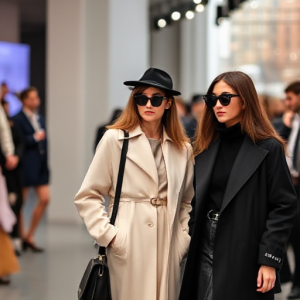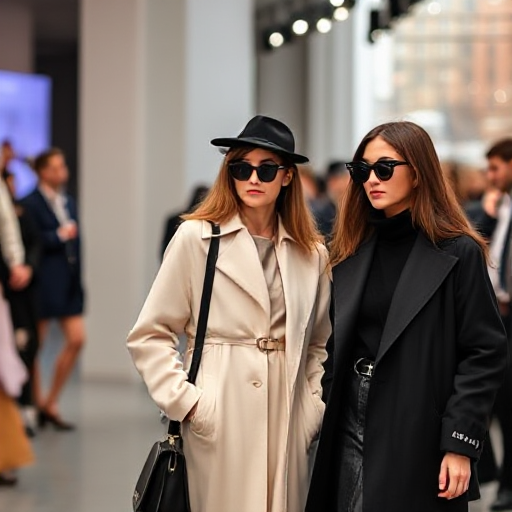
Fashion influencers have become pivotal figures in the marketing landscape. These individuals have the power to influence the purchasing decisions of their followers through their social media platforms. Fashion influencers are not just trendsetters; they serve as connectors between brands and consumers, offering a bridge for businesses looking to engage their audience in a more personal and relatable way. In this article, we’ll explore how businesses can effectively leverage fashion influencers to boost brand awareness, drive sales, and enhance customer engagement.
1. What Are Fashion Influencers?
Fashion influencers are individuals who have established themselves as authorities in the fashion industry through their social media presence. They can be bloggers, Instagram stars, YouTubers, or even TikTok personalities. What sets them apart is their ability to shape opinions and trends within the fashion space, often impacting the purchasing behavior of their followers. These influencers generally have a dedicated and engaged audience, which is highly valuable to brands looking to market their products.
2. Why Should Brands Leverage Fashion Influencers?
In the modern marketing ecosystem, traditional advertising methods are losing their effectiveness. Fashion influencers offer an alternative approach that feels more organic and authentic. Here are some key reasons why brands should consider leveraging fashion influencers:
1. Authenticity and Trust
Influencers often build strong, trusting relationships with their followers. When they endorse a product or brand, their audience perceives it as a genuine recommendation. This trust is incredibly valuable, as consumers are more likely to buy products recommended by people they trust.
2. Targeted Reach
Fashion influencers have niche audiences that align with specific interests. By partnering with influencers who share a similar target demographic, brands can reach potential customers who are already interested in fashion and lifestyle. This kind of targeted marketing is more efficient than traditional advertising.
3. Increased Engagement
Influencers are not just broadcasters of content; they interact with their followers through comments, likes, and shares. This level of engagement creates a more dynamic relationship between the influencer and their audience, which in turn can drive more interaction with the brand.
4. High ROI
Compared to traditional forms of advertising, influencer marketing tends to offer a higher return on investment (ROI). Influencers can deliver measurable results, such as website traffic, product sales, and brand awareness, making them a cost-effective marketing tool for fashion brands.
3. How to Leverage Fashion Influencers
To effectively leverage fashion influencers, brands must take a strategic approach. Below are steps to consider:
1. Identify the Right Influencers
Choosing the right influencer is critical to the success of your campaign. There are several factors to consider when identifying influencers for your brand:
- Audience Alignment: Ensure that the influencer’s audience matches your target demographic in terms of age, gender, location, and interests.
- Engagement Rate: Look for influencers with a high engagement rate, which is a better indicator of active followers than the number of followers alone.
- Brand Fit: The influencer’s style, values, and persona should align with your brand’s image. A mismatch can lead to a disjointed marketing campaign.
- Authenticity: Choose influencers who are known for their genuine and authentic content. Audiences can tell when influencers are only in it for the money, and this can damage both the influencer’s credibility and your brand’s reputation.
2. Develop a Collaboration Strategy
There are different ways brands can collaborate with fashion influencers, and each strategy should be tailored to the brand’s goals. Here are some options:
- Sponsored Posts: The influencer shares content (such as photos or videos) featuring the brand or product, often including a caption that promotes it. This is the most common collaboration type.
- Affiliate Marketing: The influencer receives a commission for every sale generated through their unique affiliate link or code. This is an incentive-based approach that aligns the influencer’s success with the brand’s sales performance.
- Brand Ambassadorships: This long-term partnership involves the influencer representing the brand over an extended period. Ambassadors usually have an ongoing relationship with the brand and frequently promote its products.
- Product Gifting: Brands can send products to influencers for them to review or feature in their content. While not always a paid partnership, product gifting is still an effective way to build relationships with influencers and gain exposure.
- Collaborative Collections: In some cases, fashion brands team up with influencers to create exclusive collections. This partnership can drive massive buzz and provide both the brand and influencer with mutual benefits.
3. Set Clear Goals and KPIs
Before launching a campaign with fashion influencers, it’s essential to define clear goals and key performance indicators (KPIs). Some common goals for influencer collaborations in the fashion industry include:
- Increasing brand awareness
- Generating website traffic
- Boosting sales
- Growing social media followers
- Improving engagement (likes, shares, comments)
By tracking KPIs such as reach, impressions, clicks, and conversions, brands can measure the effectiveness of the campaign and adjust strategies if needed.
4. Allow Creative Freedom
One of the key reasons influencers are successful is because of their unique voice and personal style. When collaborating with influencers, allow them the creative freedom to craft content that resonates with their audience. Trust them to know what works with their followers, rather than strictly dictating the content. This results in more authentic and engaging posts that feel natural rather than forced.
5. Measure and Optimize
After the campaign, it’s crucial to analyze the performance data and assess whether the objectives were met. Did the influencer’s audience respond to the campaign? Was there an increase in sales or brand engagement? The insights gained from this analysis will inform future influencer partnerships and help fine-tune your strategy for even better results.
4. Challenges of Leveraging Fashion Influencers
While influencer marketing offers tremendous potential, there are some challenges brands should be aware of:
1. Choosing the Right Influencers
Finding influencers who align with your brand can be time-consuming. It requires extensive research to ensure the influencer has the right audience, values, and content style.
2. Fake Followers and Engagement
Some influencers may use fake followers or engagement to inflate their numbers. It’s essential to conduct thorough background checks and request influencer audits before entering a partnership.
3. Budget Constraints
Influencers with a large following can be expensive, and smaller brands may struggle to afford high-tier influencers. However, micro-influencers (those with smaller but highly engaged followings) are often more cost-effective and can still deliver great results.
4. Monitoring ROI
Tracking the return on investment (ROI) from influencer campaigns can be tricky, especially if the campaign is focused on brand awareness rather than direct sales. Establishing clear KPIs before the campaign begins can help mitigate this challenge.
Fashion influencers are a powerful tool in modern marketing strategies. They provide an authentic and effective way for brands to connect with their target audience in a personalized manner. By selecting the right influencers, developing strategic collaborations, and measuring results, brands can harness the power of influencers to boost brand awareness, drive sales, and build stronger relationships with consumers. With the growing prominence of social media and the rise of influencer culture, leveraging fashion influencers is not just an option—it’s a necessity for brands seeking to stay relevant in the competitive fashion industry.
